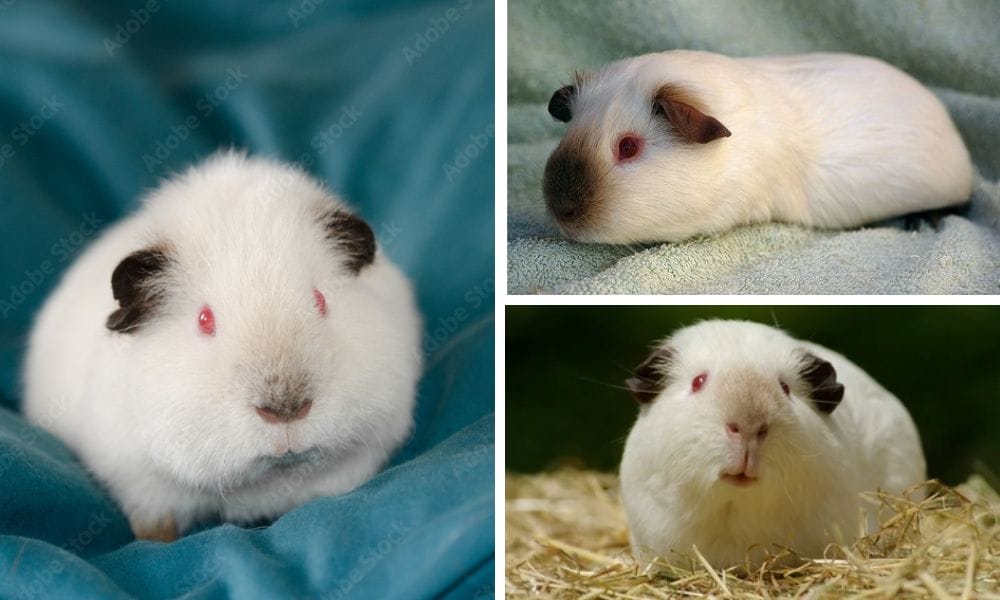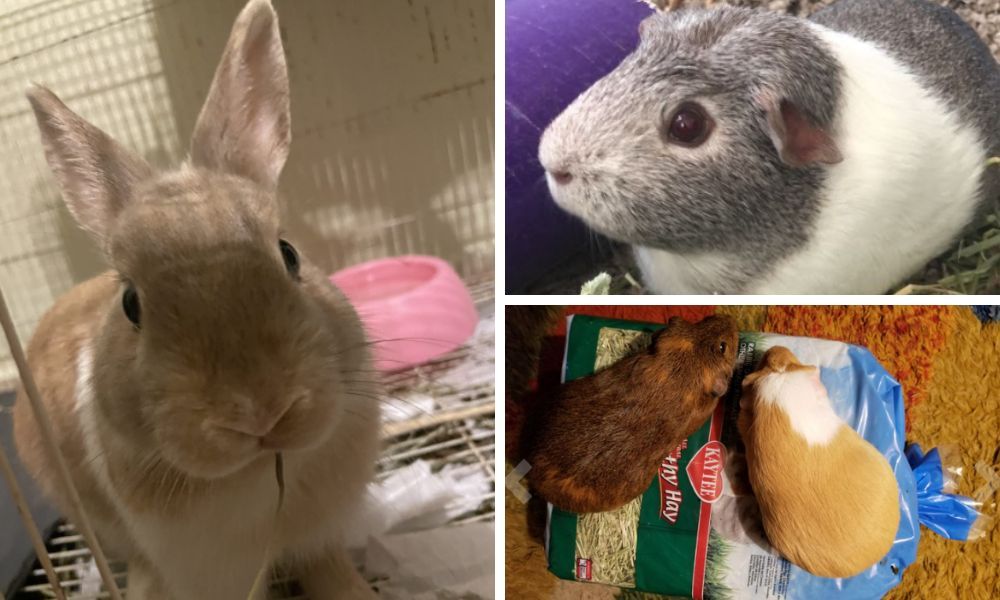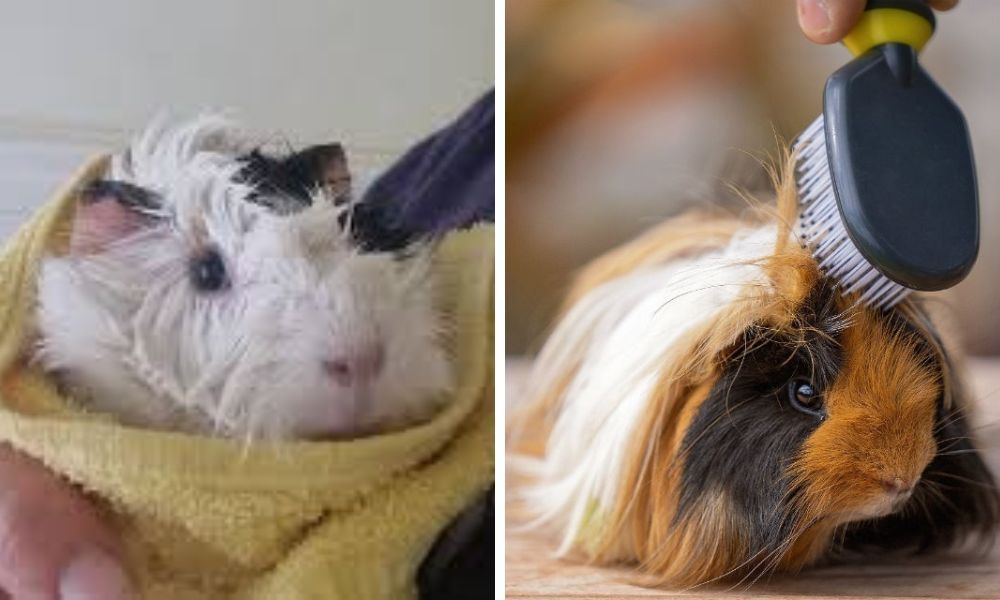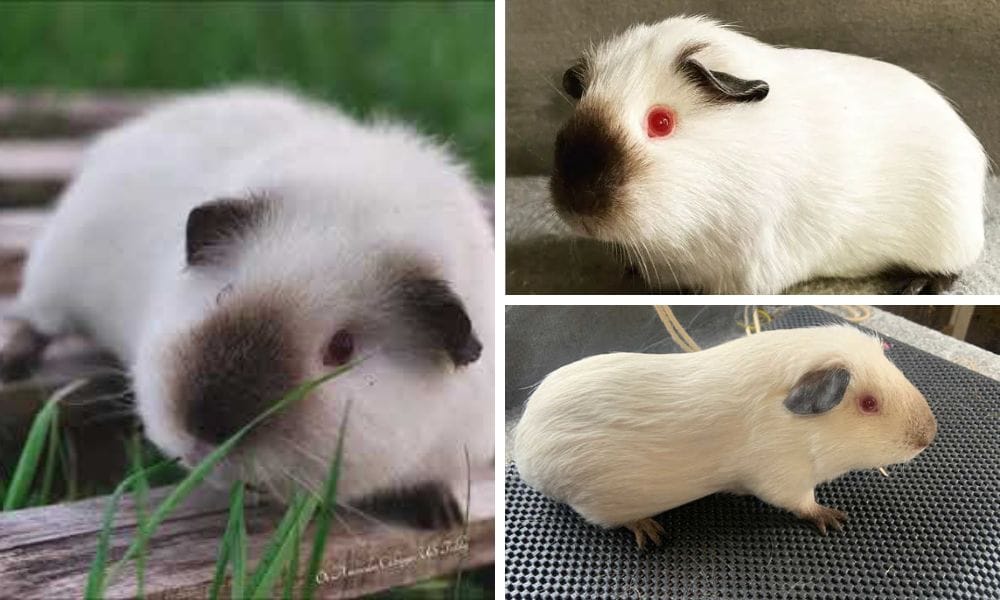The Enchanting World of Himalayan Guinea Pig
Hang on tight and get ready for an adventure into the wild world of Himalayan guinea pigs! If you ever wanted to know what life is like for these adorable, furry creatures, then this blog is for you.

Key Takeaways:
- Understand the unique characteristics and care requirements of Himalayan guinea pigs.
- Discover the social and affectionate nature of these small animals.
- Learn how to maintain the health and happiness of your Himalayan guinea pig through proper diet and environment.
Guinea pigs have long been cherished as delightful companions for pet lovers around the world. Among the various guinea pig breeds, the Himalayan guinea pig stands out with its distinctive appearance and endearing personality. Originating from South America, these small animals have captured the hearts of many with their gentle temperament and affectionate nature.
What Sets Himalayan Guinea Pigs Apart?
Himalayan guinea pigs, often compared to Siamese cats due to their similar coat color patterns, are born pure white with the potential to develop darker color points as they mature. These dark points, typically a rich milk chocolate or jet black hue, appear on their ears, nose, feet, and hind end. The contrast between their white fur and dark spots is one of the most striking features of this breed.
The Social Life of Himalayan Guinea Pigs
As social animals, Himalayan guinea pigs thrive on interaction with other guinea pigs and humans. They are not aggressive animals and often enjoy the company of other breeds of guinea pigs. It's important to provide them with companionship to ensure their mental health and overall well-being.
Understanding Their Care Needs
Himalayan guinea pigs require a specific environment to maintain their coat color and overall health. They should be kept away from direct sunlight, as they can easily overheat and their coat can fade. Their living space should be spacious and equipped with proper bedding, a water bottle, and plenty of hiding spots.
The Importance of Diet
A balanced diet is crucial for Himalayan guinea pigs. Fresh hay, such as timothy hay, should be readily available as it aids in digestion and dental health. Fresh vegetables and a small amount of fresh fruits rich in Vitamin C are also essential, as guinea pigs cannot produce this vitamin on their own.

Health and Grooming
Regular grooming is necessary to keep their coat clean and free of mats. Bathing them in lukewarm water can be done occasionally, but it's important not to overdo it as it can strip their skin of natural oils. Veterinary visits should be scheduled for routine check-ups and to address any health problems that may arise. The Unique Appearance of Himalayan Guinea Pigs Himalayan guinea pigs are often likened to the Siamese cat of the guinea pig world due to their distinctive coloration. Much like the Siamese cat, these guinea pigs have a creamy white base coat with darker points on their ears, nose, and feet. This color pattern is known as "Himalayan," and it's what makes them stand out in the cavalcade of guinea pig breeds. Their red eyes, often a subject of fascination, add to their exotic charm and are a result of a gene that causes albinism, which is also responsible for their unique coat coloration.
Unlike the Peruvian guinea pigs with their long, flowing locks, or the rosette-covered coat of Abyssinian guinea pigs, Himalayan guinea pigs boast a short hair coat that is easier to maintain. This makes them a great pet for individuals or families who may not have the time for the extensive grooming that other breeds require. Their short hair also highlights their color points, making the contrast even more striking and their care more manageable for busy pet owners.
Interaction with Other Pets and Their Environment Himalayan guinea pigs, much like other animals, are social creatures and can benefit from interaction with their own kind. When introducing a Himalayan guinea pig to other guinea pigs, such as Peruvian or Abyssinian guinea pigs, it's important to do so gradually to ensure compatibility and reduce stress. They typically get along well with other guinea pig breeds, but as with all introductions between animals, supervision and patience are key. It's also crucial to provide ample space for them to explore and exercise, as this can prevent potential territorial disputes and promote a harmonious environment.
In terms of cohabiting with other types of pets, caution is advised. While they may be curious about other animals, larger pets from different species, especially those with predatory instincts, could pose a threat to these small creatures. Always ensure that interactions are closely monitored and that your Himalayan guinea pig has a safe retreat. Providing a secure and enriching habitat with plenty of fresh water, areas to eat plants, and hideaways can make your Himalayan guinea pig feel at ease, whether they live alone or with companions. Remember, a happy guinea pig is one that feels safe and engaged in its environment. The Unique Coat Patterns of Himalayan Guinea Pigs Himalayan guinea pigs are often celebrated for their distinctive coat patterns that set them apart from other guinea pig breeds. Unlike the uniform fur of the Peruvian guinea pig, Himalayans are known for their color-point markings, similar to those of Siamese cats. Their bodies are primarily white, with darker shades gracing their ears, feet, and noses. This striking contrast is not just a visual delight but also a fascinating genetic trait that has intrigued animal enthusiasts and pet owners alike.
The coloration of the Himalayan guinea pig is temperature-sensitive, with cooler areas of their body developing darker fur. This means that the brown or black color points can become more pronounced in colder environments. It's a remarkable example of how nature influences the appearance of animals. Pet store visitors often marvel at these little creatures, not just for their cuddly demeanor but also for their unique aesthetic appeal. The Himalayan guinea pig's coat is not only a visual treat but also a conversation starter, making them a popular choice for those looking to adopt a pet with a bit of flair.

Himalayan Guinea Pigs in Popular Culture Himalayan guinea pigs may not be as ubiquitous in popular culture as cats or dogs, but they have carved out their own niche among small pet enthusiasts. Their calm and docile nature has made them ideal subjects in various forms of media, showcasing the breed's suitability as a family pet. They've appeared in children's books, educational materials, and even on social media, where pet influencers share the daily joys and challenges of caring for these adorable animals.
In recent years, the himalayan guinea pig breed has gained attention through viral videos and images, highlighting their playful antics and endearing interactions with humans. These snippets of Himalayan guinea pig life not only entertain but also educate potential pet owners about the responsibilities and rewards of caring for this particular guinea pig breed. As more people discover the charm of the Himalayan guinea pig through these cultural touchpoints, the breed's popularity continues to rise, further cementing its status as a beloved pet choice for animal lovers around the world.

The Unique Coat Colors and Patterns of Himalayan Guinea Pigs
Himalayan guinea pigs are a marvel when it comes to their distinctive coat colors and patterns. Unlike other guinea pig breeds, these little creatures boast a color-point pattern similar to that of Siamese cats, which is characterized by a creamy white body and darker shades on their ears, nose, and feet. This striking contrast is not just a random occurrence; it's a result of a genetic trait that is specific to the Himalayan breed. The cooler parts of their body develop the darker color, which is why their extremities are the areas that exhibit this unique pigmentation.
The coloration of a Himalayan guinea pig is not static; it can change based on environmental factors and even the pig's health. When exposed to higher temperatures, their darker areas may fade, while cooler climates can intensify the color contrast. This chameleon-like quality adds an extra layer of fascination to these already enchanting creatures. Owners often find it intriguing to observe the subtle changes in their pets' coat over time, making the Himalayan guinea pig a continuously engaging companion.
Himalayan Guinea Pigs and Their Temperament
When it comes to temperament, Himalayan guinea pigs are known for their docile and calm nature, making them excellent pets for families and individuals alike. They are typically less skittish than other guinea pig breeds, which can be attributed to their laid-back personality. This makes them particularly suitable for handling and cuddling, as they tend to enjoy the warmth and comfort of human interaction. Their gentle disposition is one of the many reasons why Himalayan guinea pigs are cherished by their owners and often recommended for first-time guinea pig parents.
However, despite their serene nature, Himalayan guinea pigs are not devoid of playfulness. They exhibit a delightful curiosity and can be quite active during their peak hours, usually during the early mornings and evenings. Watching a Himalayan guinea pig explore its surroundings, play with toys, or interact with fellow guinea pigs can be a source of joy and entertainment. Their balance of tranquility and playfulness makes them adaptable companions that can fit into various household dynamics.
The Joy of Bonding
Himalayan guinea pigs are known for their love of interaction. They appreciate gentle handling and often express their contentment through soft purring sounds. Older children can make great caretakers for these guinea pigs due to their calm demeanor, making them good pets for families.
Creating the Perfect Habitat
Their cages should be large enough to allow for exercise and exploration. It's important to include toys and tunnels to stimulate their minds and prevent boredom. The cage should be placed in an area with a stable temperature to avoid the risk of them overheating.
Breeding and Babies
If you're considering breeding Himalayan guinea pigs, it's essential to understand that they are prey animals and can be quite prolific. Babies, known as pups, are born fully furred and with their eyes open. They should stay with their mother for a few months to receive her rich milk and learn social cues.
Choosing the Right Breeder
When looking to adopt a Himalayan guinea pig, it's important to find a reputable breeder who can provide information about their lineage and health history. A good breeder will ensure that the guinea pigs have been raised in a clean and caring environment.
Himalayan Guinea Pig Care
Himalayan Guinea Pigs are a unique and striking breed that require specific care. These herbivores thrive on a diet primarily composed of grass hays. Despite their exotic appearance, they are not high-maintenance pets, but they do need regular nail trims and minimal grooming to prevent matting in their short fur. It's important to remove any uneaten food daily and clean their living space regularly for optimal health. They also have a sensitivity to the sun, so it's crucial to consider their exposure to sunlight. As with all guinea pigs, they are adored for their gentle nature and make popular pet
The Commitment to Care
Owning a Himalayan guinea pig is a commitment that should not be taken lightly. They depend on their owners for food, water, shelter, and companionship. With proper care, these small animals can live up to 8 years, providing long-term companionship and joy.
Summary
Himalayan guinea pigs are not just popular pets; they are companions that require dedicated care and attention. Their unique appearance, with white fur and dark points, sets them apart from other breeds. They are social animals that enjoy the company of other guinea pigs and humans, making them great pets for those willing to provide the necessary care. A proper diet, a comfortable habitat, and regular veterinary visits are key to keeping them healthy and happy. With their affectionate nature and gentle temperament, Himalayan guinea pigs can bring a lot of joy to any home.
FAQ Section
Q: How often should I feed my Himalayan guinea pig fresh vegetables? A: Himalayan guinea pigs should have a daily serving of fresh vegetables to ensure they receive the necessary nutrients. However, it's important to monitor the types and amounts, as some vegetables can cause digestive issues if given in excess.
Q: Can Himalayan guinea pigs live with other breeds of guinea pigs? A: Yes, Himalayan guinea pigs can coexist peacefully with other breeds of guinea pigs. They are social creatures and benefit from the companionship. Just ensure that all guinea pigs are properly introduced and that the cage is spacious enough for multiple occupants.
Q: What are the favorite treats of Himalayan guinea pigs? A: Himalayan guinea pigs, like most guinea pigs, enjoy a variety of treats. Fresh fruits, such as strawberries or blueberries, can be given in moderation as a special treat. Always introduce new foods slowly and in small quantities to avoid digestive upset.

